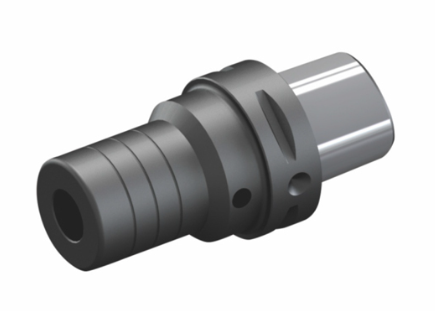Common Issues with Hydraulic Tool Holders and Their Solutions
Common Issues with Hydraulic Tool Holders and Their Solutions
- Details and Advantages of Hydraulic, Power, and Cold-Press Tool Holders:
- Power Tool Holders: These holders offer high clamping force and excellent centering precision, making them suitable for heavy-duty cutting operations.
- Hydraulic Tool Holders: Similar to power tool holders in performance, hydraulic tool holders provide even higher precision. For example, high-quality hydraulic tool holders can achieve an overall precision of up to 0.002mm.
- Cold-Press Tool Holders: These are considered the future trend and may gradually replace collet tool holders, though they require specific equipment to operate.
- Power Tool Holders: These holders offer high clamping force and excellent centering precision, making them suitable for heavy-duty cutting operations.
- Does Frequent Tool Change Affect the Clamping Precision of Hydraulic Tool Holders?
- Yes, it does. Hydraulic tool holders are designed for high precision, and it is recommended to dedicate one tool holder per tool to avoid frequent disassembly. Similar to other tool holders, repeated changes can affect accuracy.
- What to Do if the Tool Cannot Be Removed Even After Loosening the Pressure Bolt on a Hydraulic Tool Holder?
- The tool holder may be clogged internally. You can try using an air gun to blow air through the internal cooling hole at the rear of the tool holder to clean it.
- What is the Working Principle of a Hydraulic Tool Holder?
- Unlike traditional tool holders, hydraulic tool holders use a pressure bolt for tightening. When the bolt is tightened, it pushes a piston and sealing block inside the tool holder, generating hydraulic pressure. This pressure is evenly transmitted to a steel expansion sleeve from the circumferential direction, which then clamps the tool.
- Why Shouldn’t Taps Be Mounted on Hydraulic Tool Holders?
- Using hydraulic tool holders for taps is somewhat overkill. Taps do not require the high clamping force and precision offered by hydraulic tool holders. Additionally, taps have limited chip removal space, making them less suitable for hydraulic tool holders.
- What is the Difference Between the Pull Stud for Hydraulic Tool Holders and for Collet Tool Holders?
- The difference lies not in the tool holder but in the specifications of the machine spindle. As long as the same machine is used, the pull studs will have the same specifications.
- What Are the Advantages and Disadvantages of Hydraulic and Heat Shrink Tool Holders?
- Hydraulic Tool Holders: These holders use hydraulic pressure to evenly clamp the tool, offering high precision and strong clamping force. They are widely used in high-precision machining.
- Heat Shrink Tool Holders: These rely on heat to expand the holder and clamp the tool. While they offer high precision, they require additional equipment for heating, and there is a risk of thermal deformation affecting the tool and material.
Conclusion:
Hydraulic tool holders are a reliable choice for high-precision machining, offering consistent clamping force and excellent accuracy. However, like any specialized tool holder, they have limitations and require proper maintenance to maintain their performance. Understanding the working principles and best practices for use can help maximize their benefits and prevent common issues from arising.

